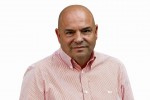A cure for hearing loss? Gene therapies are getting closer
Every once in a while, modern medicine can feel like a bit of magic. Like when a vaccine is shown to eliminate cases of cervical cancer among young women or gene editing allows someone with sickle cell disease to live without constant pain. Or when an experimental gene therapy allows a deaf 11-year-old boy to hear.
Aissam Dam is now able to hear sound for the first time in his young life. The treatment he received, developed by Eli Lilly & Co. subsidiary Akouos Inc., is aimed at fixing the underlying cause of his congenital deafness.
As someone who has followed this field for many years, watching drug after drug for various types of hearing loss fail, reading about Dam’s experience gave me goosebumps. Finally, some momentum.
Until now, the options for addressing hearing loss have been limited to devices — a hearing aid can amplify sound for people whose ears can still detect and transmit it, whereas a cochlear implant bypasses damaged parts of the ear to stimulate the auditory nerve.
The current advance can’t help the millions of people in the US experiencing some level of hearing loss — or even most of the people with common forms of congenital deafness. But the path to treatments suddenly looks clearer.
“It’s very exciting,” says Nancy Young, who founded the Lurie Children's Cochlear Implant program. “It’s the........
© The Korea Times





















 Toi Staff
Toi Staff Gideon Levy
Gideon Levy Andrew Mitrovica
Andrew Mitrovica David Hutt
David Hutt Moncef Khane
Moncef Khane Neve Gordon
Neve Gordon Patrick Gathara
Patrick Gathara Ron Kronish
Ron Kronish Rami G Khouri
Rami G Khouri Christoph Strack
Christoph Strack Fernando Romero Nuñez
Fernando Romero Nuñez Tarik Cyril Amar
Tarik Cyril Amar Tuvia Book
Tuvia Book Brad Glosserman
Brad Glosserman Stefano Lusa
Stefano Lusa Dr Ramzy Baroud
Dr Ramzy Baroud
